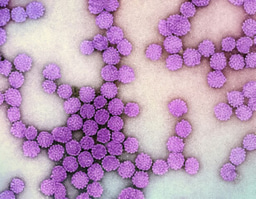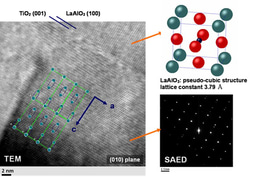Why is Manuka Honey Unique?
Published in Agricultural & Food Science

Explore the Research
 sciencedirect.com
sciencedirect.com
ScienceDirect
About ScienceDirect Shopping cart Contact and supportTerms and conditionsPrivacy policy
Composition wise honey contains interesting source of natural macro- and micro-nutrients, natural sugar (which can be easily absorbed by the intestinal cells), proteins, antioxidants, vitamins, minerals, iron and folic acids etc. The colony's worker bees collect and share the delicious nectar with one another. These hive bees continue to consume nectar, which they subsequently regurgitate. An enzyme called glucose oxidase, which converts glucose into hydrogen peroxide and gluconic acid, was introduced by the bees. This gluconic acid is what gives honey its acidity. The worker bees then use their wings to vigorously fan the nectar in order to cause evaporation and make honey a viscous and supersaturated sugar solution. The primary determinant of honey's composition is its floral source; environmental and seasonal factors can also have an impact on the composition of honey and its biological effects. Honey is primarily used in modern medicine to heal wounds, particularly burn, minor cuts and non-healing wounds. According to modern medicine, honey's anti-oxidant, anti-inflammatory, and antibacterial qualities are primarily responsible for its restorative effects. Researchers have also noted that honey has a number of beneficial effects on circulation, sperm count, healing, growth, and fertility. However, due to a lack of clinical trials and compositional variability, the use of honey as medicine in modern medicine is unclear.
Manuka honey (MH) is derived from the nectar of manuka flower which is native to New Zealand and Eastern Australia. This plant is of the Myrtaceae family and grows into a small shrub or a small tree. Like other monofloral and multifloral honey MH also has natural sugar, proteins, antioxidants, measurable amounts (parts per million) of enzymes and vitamins, minerals, iron and folic acids etc. Phosphatase catalase, diastase, glucosidase, glucose oxidase and invertase are the main enzymes present in it. Furthermore, it contains a variety of bioactive substances, such as phenolic compounds and their derivatives that are derived from plants. However, what makes MH so unique? Well the answer is the unique manuka factor (UMF) value, which is determined by standardisation of antibacterial activity as equivalents of phenol concentration. There is various research on antibacterial agents in MH, and methylglyoxal (MGO) has been found to be a significant factor for its activity. This contributes to non peroxide activity (NPA) of JH. The high price of MH is due to its NPA.
It has been noted that the manuka flower’s nectar produces dihydroxyacetone (DHA), a direct precursor to the formation of MGO. When honey is unripe or immature, it has a high DHA content and a low MGO content; as the honey ages, the DHA content converts to MGO. Although the DHA to MGO ratio of fresh MH honey is high, it is estimated to reach a 2:1 ratio as the honey ripens. While DHA undergoes an irreversible dehydration reaction to produce MGO, the water content of the MH preserves the ratio of 2:2 during storage, preventing the conversion of all DHA to MGO (1).
There are several types of flavonoids, phenolic acids present in honey providing antioxidant activity through free radical quenching and its directly linked with hydroxylation of both compounds. The MH have high total flavonoid mainly luteolin (>0.05 mg/100 g honey). Gallic acid is the key phenolic acid in MH. The specific marker for MH are methyl syringate and its glycoside leptosperin (previously known as leptosin) making this honey unique from other uni-floral honey. In addition, 3,4,5-trimethoxybenzoic acid maltoside generates 3,4,5-trimethoxybenzoic acid in MH known for antibacterial activities against Gram-positive Staphylococcus aureus. Furthermore, few pterideinediones {3,6,7-trimethyl-2,4(1H,3H)-pteridinedione; lepteridine ; 6,7-dimethyl-2,4(1H,3H)-pteridinedione}, MGO and norisoprenoids especially unedone provide MH a unique aroma. Additionally, MH have type II arabinogalactan proteins (AGPs) act as an immunomodulatory protein in wound healing. The concentration of MGO in honey is regarded as a unique manuka factor (UMF) (2). A fresh and commercially available MH has Kojic acid content between 600 to 2700 mg/kg and 130 to 1600 mg/kg respectively. Kojic acid act as anti-fungal agent i.e amphotericin B and strobilurin (3) .
All of these properties make MH a pricy honey but fraudulent honey is common when it comes to special honey like manuka and one needs to know the distinction between real and fake/artificial honey. But it is about all honey, not just MH. The shelf life of MH is determined by hydroxymethylfurfural or HMF present in it which is by product of acid catalysed hydrolysis of sugar specially fructose and this reaction can be heat induced. The amount of HMF in MH should not exceed 40 mg/kg.
In the field of wound healing applications the (MH) based product gained attention by the scientific community because it is the first honey which has approval from the United States Food and Drug Administration (US-FDA). The wound healing potential of MH based wound healing agent against topical infections and wounds is better than any other honey. Various companies are creating the MH based products to treat burns, diabetic foot ulcers, wounds and minor cuts. Likewise, Manuka honey-based products are made by Derma Sciences, Manuka Health, ManukaMed, Advancis Medical, Oswell Pennda, Theo Manufacturing BV, Links Medical Products Inc., and Nature's Gold etc.
MedihoneyTM is an antibacterial wound gel from Derma Sciences that works well for treating chronic inflammation and related issues such as wound exudate and odor. It facilitates the healing process by reducing wound size, discomfort, odor, and exudate. According to an in vivo study by Chaudhary et al., MedihoneyTM gel has the potential to be used as wound closure, reepithelialization, collagen I/III, α-Smooth muscle actin expressions and angiogenesis etc (4). In addition to the gels other MH based products are wound dressings, ointments, antifungal creams, syrups and eye drops certified for clinical applications.
Besides these MH is used for other cosmetic purposes like anti-itch and anti-wrinkle creams. moisturisers, hand washes and soaps etc. To fully realise the potential of phytochemicals in MH and develop innovative MH-based products for clinical usage, more research is needed.
Resources
1. Julia Atrott, , Steffi Haberlau, and Thomas Henle. "Studies on the formation of methylglyoxal from dihydroxyacetone in Manuka (Leptospermum scoparium) honey." Carbohydrate research 361 (2012): 7-11.
2. El-Senduny, Fardous F., Nesrine M. Hegazi, Ghada E. Abd Elghani, and Mohamed A. Farag. "Manuka honey, a unique mono-floral honey. A comprehensive review of its bioactives, metabolism, action mechanisms, and therapeutic merits." Food Bioscience 42 (2021): 101038.
3.Seema Patel,, and Simon Cichello. "Manuka honey: an emerging natural food with medicinal use." Natural products and bioprospecting 3 (2013): 121-128.
4.Amrita Chaudhary, Swarnendu Bag, Provas Banerjee, and Jyotirmoy Chatterjee. "Wound healing efficacy of Jamun honey in diabetic mice model through reepithelialization, collagen deposition and angiogenesis." Journal of traditional and complementary medicine 10, no. 6 (2020): 529-543.





Please sign in or register for FREE
If you are a registered user on Research Communities by Springer Nature, please sign in